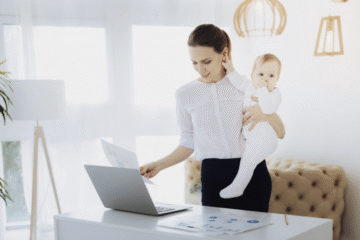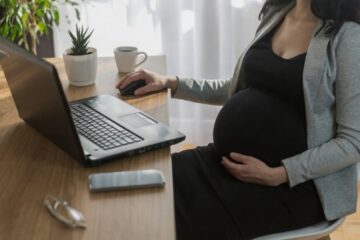Planning for maternity leave can feel like a heavy burden, especially when you’re trying to balance work, family, and finances. However, knowing your rights as an employee is one of the most powerful things you can do to prepare for a confident transition into parenthood.
At eairwoman, we’re here to simplify the process.
Whether you’re wondering how long you need to be employed before taking leave or what you’re entitled to as a casual worker, this guide breaks it down clearly and calmly—so you can make informed decisions for yourself and your future.
How Long Do You Have to Work to Get Maternity Leave?
According to the Fair Work Ombudsman, you need to have been employed by your current employer for at least 12 continuous months before the expected date of birth or adoption. To qualify for unpaid parental leave in Australia, this requirement applies whether you are employed full-time or part-time.
Casual employees may also qualify for unpaid leave, but the nature of their employment must be regular and systematic, and there must be a reasonable expectation of continuing employment with the same employer.
If eligible, you are entitled to 12 months of unpaid parental leave, with the option to request an extension of up to an additional 12 months. Employers must consider this request, although they are not legally required to approve the extension.
How Long Do You Have to Be Employed to Get Paid Parental Leave?
Paid parental leave, offered through the Australian Government’s Paid Parental Leave scheme, has a separate set of eligibility requirements. To access up to 18 weeks of Parental Leave Pay, you need to meet what’s called the work test.
This means you must have worked for at least 10 of the 13 months before the birth or adoption of your child. During this time, you must have worked for at least 330 hours—equivalent to about one full day of work per week. There can’t be a gap of more than 12 weeks between any two work periods.
This work can be in a variety of roles—including casual, part-time, self-employed, or contract positions—as long as you are earning an income and not simply volunteering.
Do Casual Employees Qualify for Maternity Leave?
Yes, casual employees can still qualify for both unpaid and paid parental leave, but eligibility depends on the consistency and nature of their work.
For unpaid leave, casuals need to show that they’ve been working on a regular and systematic basis for at least 12 months and have a reasonable expectation of ongoing work. For paid leave, casuals must simply meet the work test, regardless of whether their employment has been continuous or with multiple employers.
The flexibility of modern employment shouldn’t exclude you from your rights—and the law recognises that. If you’re unsure, it’s always helpful to keep records of your work hours and contracts to support your application.
When and How Do You Notify Your Employer?
To take unpaid parental leave, you are required to provide your employer with written notice at least 10 weeks before the intended start of your leave. This notice should include the expected start and end dates of your leave.
You may also be asked to provide supporting documents, such as a medical certificate confirming the expected date of birth or formal adoption papers. Having open conversations with your employer about your leave and return-to-work preferences can make the transition smoother—for both you and your workplace.
When Should You Apply for Paid Parental Leave?
You can apply for Parental Leave Pay through your myGov account up to three months before your baby’s due date. Once your claim is submitted and approved, payments can begin from the date you stop working to care for your newborn or adopted child.
Getting your documentation organised early can help avoid delays. You’ll need to provide proof of income, your baby’s birth (after the fact), and other personal details. This payment can be made directly to you or through your employer, depending on the arrangement.
What About Partner Leave and Other Support?
Fathers and partners may be eligible for Dad and Partner Pay, which provides up to 2 weeks of paid leave at the national minimum wage. The same work test applies, and claims must be lodged through myGov.
It’s also worth checking if your workplace offers additional paid parental leave benefits, as some employers—especially in the public sector—go beyond the legal minimums.
To explore this and other support options, the Pregnancy, Birth, and Baby website is a useful government-backed resource.
Summary
Maternity leave requirements can feel daunting, but once you understand the rules, it becomes much more manageable.
At eairwoman, we’re here to support you through every life stage, including maternity leave. Our app can help you track income changes, simulate different leave scenarios, and show how career breaks might affect your superannuation and retirement outlook.
Download the eairwoman app to take control of your future—because planning for parenthood shouldn’t mean compromising your long-term security.
Contact us for helpful support and guidance.





